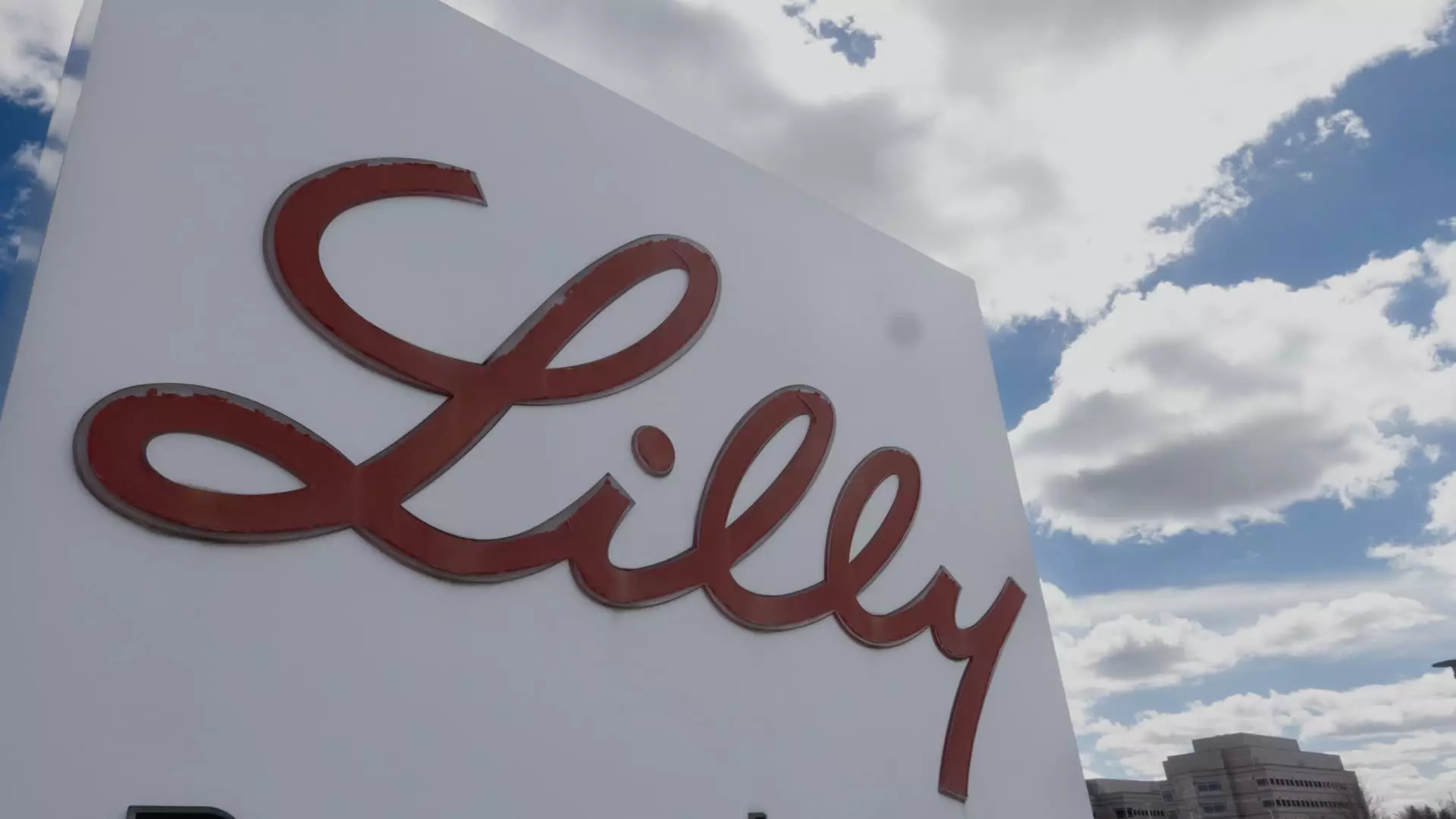Eli Lilly & Company has recently announced a monumental investment of at least $27 billion to establish four new manufacturing facilities across the United States. This decision is primarily driven by the skyrocketing demand for the company’s popular weight-loss and diabetes medications, alongside its broader ambition to develop innovative therapies for various medical conditions. This strategic move not only signifies a pivotal expansion in Eli Lilly’s manufacturing capabilities but also reflects an evolving narrative of reshoring and reducing reliance on foreign supply chains—a priority echoed by political leadership.
The announcement came during a high-profile event in Washington, D.C., underscoring the political implications of Eli Lilly’s strategy. Since 2020, the pharmaceutical giant has directed over $23 billion towards expanding its domestic manufacturing footprint, marking a total commitment exceeding $50 billion in recent years. This significant investment underlines the company’s dedication to ensuring a consistent supply of its blockbuster drugs while addressing the backdrop of ongoing global supply chain challenges.
At the core of this investment initiative are three new sites designated for the production of active pharmaceutical ingredients. Notably, tirzepatide—the key compound in Eli Lilly’s groundbreaking medications Zepbound and Mounjaro—will be a focal point of work in these plants. By ramping up production of these essential ingredients, Eli Lilly aims to meet the surging demand for GLP-1 receptor agonists, a class of medications that has rapidly gained traction in the realms of diabetes management and weight loss.
While the initial thrust of these new facilities revolves around current drugs, Eli Lilly’s investment strategy is not limited to immediate returns. CEO David Ricks expressed optimism about the potential of the company’s extensive drug pipeline, which encompasses a range of therapeutic areas, including cardiometabolic health, oncology, immunology, and neuroscience. This foresight positions Eli Lilly to not only cater to existing market demands but also to innovate and introduce new products that address diverse patient needs in the near future.
The competitive landscape for obesity medications amplifies the urgency of Eli Lilly’s strategic focus. As the global market for obesity drugs is anticipated to exceed $150 billion annually by the early 2030s, maintaining a stronghold in this lucrative sector is crucial. Eli Lilly’s leading medications, Zepbound and Mounjaro, find themselves in direct competition with Novo Nordisk’s products, including Wegovy and Ozempic. This rivalry intensifies the necessity for companies to expand production capabilities swiftly to satisfy burgeoning market demands.
The new manufacturing sites will play a vital role in addressing recent supply shortages for Eli Lilly’s flagship products. Over the past year, when access to Zepbound and Mounjaro diminished, many patients turned to unregulated compounded alternatives. Such unapproved versions posed potential risks due to a lack of quality control. By expanding production through these new facilities, Eli Lilly seeks to ensure that patients have reliable access to FDA-approved medications instead of relying on questionable substitutes.
The Food and Drug Administration has recently confirmed that the shortage of tirzepatide has been resolved, further solidifying Eli Lilly’s position in the market. This development enables the company to strengthen its commitment to providing safe, effective, and approved treatments that meet the needs of patients while stemming the reliance on inferior counterfeit products.
In conjunction with this investment, Eli Lilly anticipates creating over 3,000 high-quality jobs, including positions for engineers and scientists. Additionally, there will be around 10,000 construction jobs dedicated to the building of these new facilities. This job creation factor not only contributes to local economies but also aligns with broader economic initiatives to bolster the U.S. manufacturing sector.
Eli Lilly’s commitment to developing its domestic manufacturing capabilities has also been positioned as heavily influenced by previous U.S. tax reforms. Ricks highlighted the importance of the 2017 Tax Cuts and Jobs Act, which significantly altered the tax landscape for corporations, fostering an environment conducive to investment. However, as certain provisions of this act are set to expire, the pharmaceutical giant advocates for their continuation to sustain future growth and investment in the U.S.
In a parallel move, Novo Nordisk, cognizant of the competitive demand, has also invested billions to enhance its manufacturing capabilities and secure supplies for its diabetes and weight-loss therapeutics. This competitive investment landscape challenges Eli Lilly to not only keep pace but to lead in the race to meet growing healthcare needs.
Eli Lilly’s aggressive $27 billion investment in expanding its U.S. manufacturing capacity demonstrates its commitment to remaining a key player in a rapidly evolving pharmaceutical landscape while addressing critical public health needs. This initiative not only reinforces Eli Lilly’s relevance in the marketplace but also heralds a wider commitment to domestic growth and patient-centric manufacturing practices.


Leave a Reply